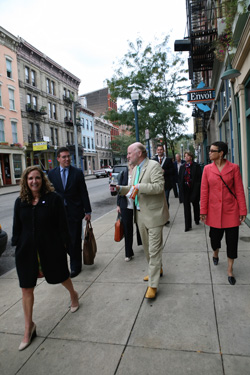
Wally Hurst
The survey revealed many reasons that businesses do and do not support the arts. One of the main reasons given for support by business owners is that “it’s a good thing to do”. Those of us working in the arts know this, too – that is the reason many of us left other endeavors to work in the arts, often at a substantial cost personally.
To understand why businesses give to the arts is a clarion call for those of us in the arts to reach out to businesses and find out which of these reasons motivates them to support the arts in their community.
We as an arts community need to understand what it is that each business wants from our relationship with them – and then try our hardest to give it to them.
If they need recognition, give them as much as you can. Offer them plaques, employee nights, employee discount programs, advertising and public service announcements with their names all over them. When in doubt, ask them what they want. One of our sponsors likes to have their employees over for a holiday dinner and show. If that means we feed 90 people and give them free tickets for a show, that is what we do. If it means, on the other hand, that we only mention them in the posters and the front of the program and make their employees pay for their tickets, that is what we do. And if they want to be anonymous and just get a few comps, we do that too.
If they want to support educational initiatives, let them know all about your educational programs – and how they can sponsor them. All of us in the arts are teachers, and we are all responsible for at least the informal education of children and adults – and most of us have formal educational programs, too. Personally, I have found the “easiest sell” to business is the educational programs we have for young people. They all want to be associated with those programs, it seems. If we make our educational programs functional and attractive enough (publicity helps), businesses will be lining up to support them.
For businesses supporting the arts, the survey revealed another truth: that businesses give where they have an existing relationship.
Read More







































